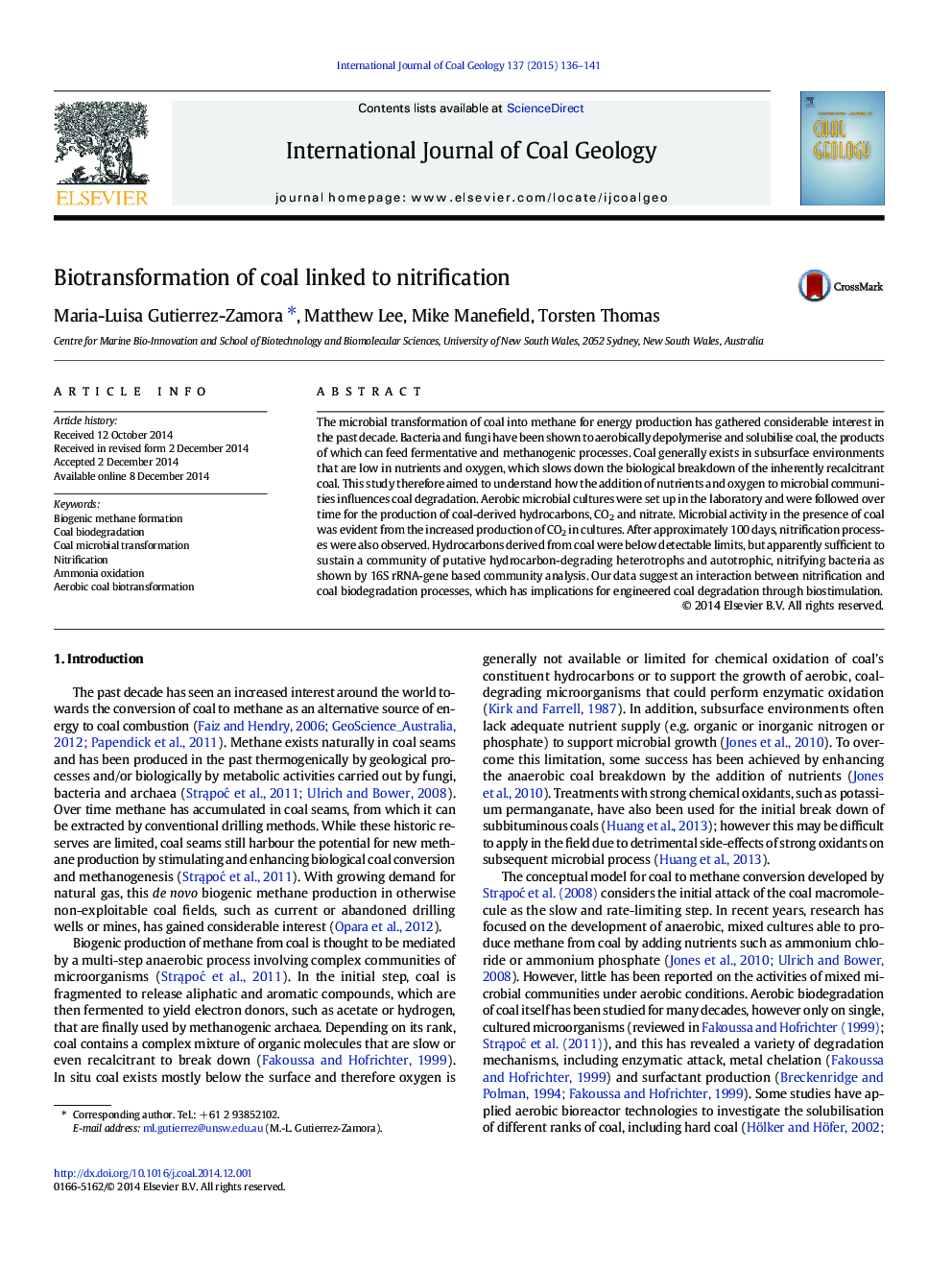| کد مقاله | کد نشریه | سال انتشار | مقاله انگلیسی | نسخه تمام متن |
|---|---|---|---|---|
| 1753098 | 1522561 | 2015 | 6 صفحه PDF | دانلود رایگان |
• We investigated the biodegradation of coal in submerged, aerobic and closed systems.
• Addition of nutrients and oxygen to coal did not enhance its biodegradation.
• Addition of nutrients, oxygen and bacteria to coal stimulated its biodegradation.
• CO2 production from aerobic coal degradation stimulated nitrification.
The microbial transformation of coal into methane for energy production has gathered considerable interest in the past decade. Bacteria and fungi have been shown to aerobically depolymerise and solubilise coal, the products of which can feed fermentative and methanogenic processes. Coal generally exists in subsurface environments that are low in nutrients and oxygen, which slows down the biological breakdown of the inherently recalcitrant coal. This study therefore aimed to understand how the addition of nutrients and oxygen to microbial communities influences coal degradation. Aerobic microbial cultures were set up in the laboratory and were followed over time for the production of coal-derived hydrocarbons, CO2 and nitrate. Microbial activity in the presence of coal was evident from the increased production of CO2 in cultures. After approximately 100 days, nitrification processes were also observed. Hydrocarbons derived from coal were below detectable limits, but apparently sufficient to sustain a community of putative hydrocarbon-degrading heterotrophs and autotrophic, nitrifying bacteria as shown by 16S rRNA-gene based community analysis. Our data suggest an interaction between nitrification and coal biodegradation processes, which has implications for engineered coal degradation through biostimulation.
Journal: International Journal of Coal Geology - Volume 137, 1 January 2015, Pages 136–141
